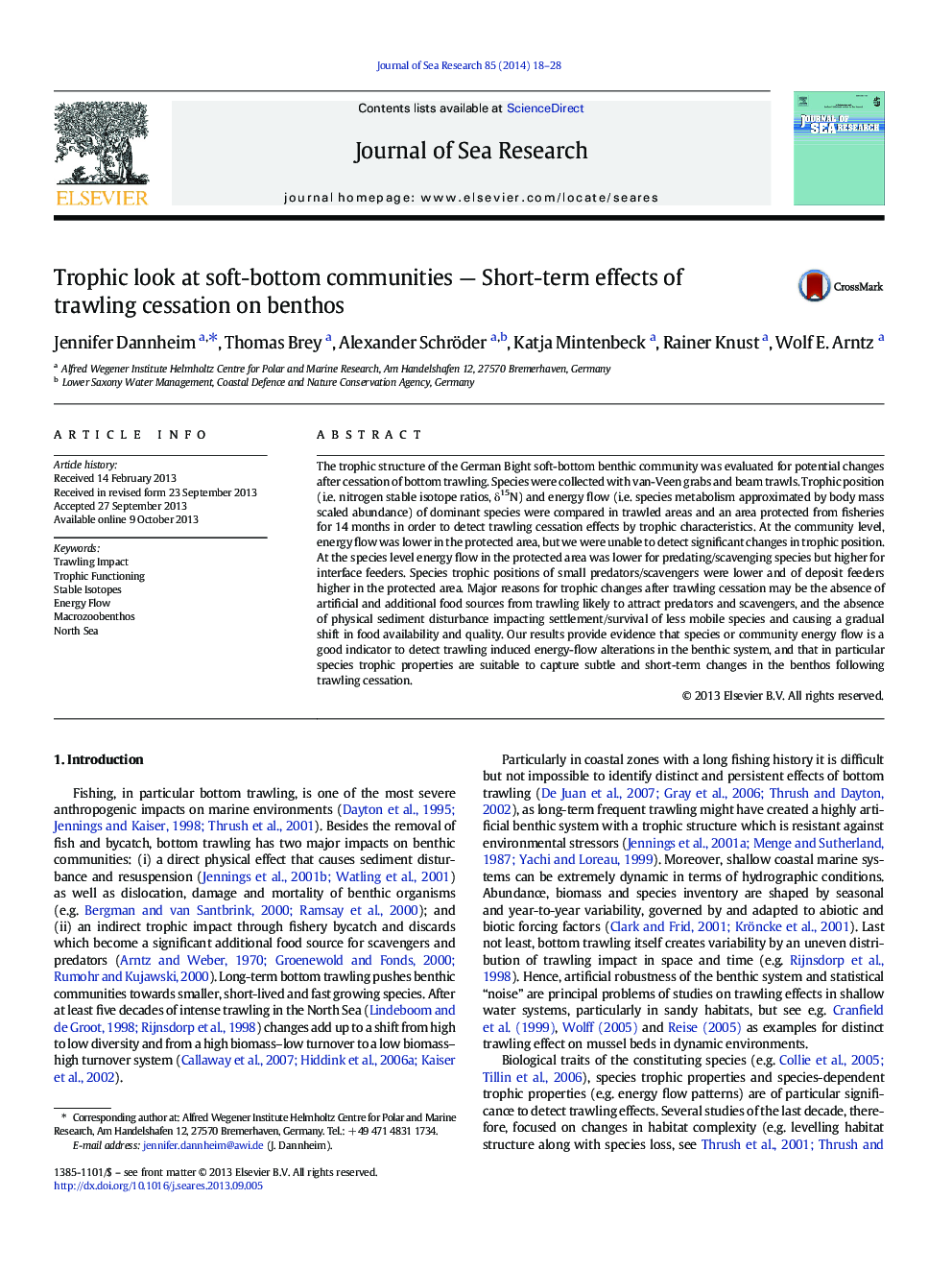| Article ID | Journal | Published Year | Pages | File Type |
|---|---|---|---|---|
| 6387353 | Journal of Sea Research | 2014 | 11 Pages |
Abstract
The trophic structure of the German Bight soft-bottom benthic community was evaluated for potential changes after cessation of bottom trawling. Species were collected with van-Veen grabs and beam trawls. Trophic position (i.e. nitrogen stable isotope ratios, δ15N) and energy flow (i.e. species metabolism approximated by body mass scaled abundance) of dominant species were compared in trawled areas and an area protected from fisheries for 14 months in order to detect trawling cessation effects by trophic characteristics. At the community level, energy flow was lower in the protected area, but we were unable to detect significant changes in trophic position. At the species level energy flow in the protected area was lower for predating/scavenging species but higher for interface feeders. Species trophic positions of small predators/scavengers were lower and of deposit feeders higher in the protected area. Major reasons for trophic changes after trawling cessation may be the absence of artificial and additional food sources from trawling likely to attract predators and scavengers, and the absence of physical sediment disturbance impacting settlement/survival of less mobile species and causing a gradual shift in food availability and quality. Our results provide evidence that species or community energy flow is a good indicator to detect trawling induced energy-flow alterations in the benthic system, and that in particular species trophic properties are suitable to capture subtle and short-term changes in the benthos following trawling cessation.
Related Topics
Physical Sciences and Engineering
Earth and Planetary Sciences
Oceanography
Authors
Jennifer Dannheim, Thomas Brey, Alexander Schröder, Katja Mintenbeck, Rainer Knust, Wolf E. Arntz,
